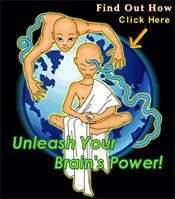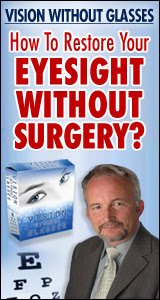Effective Autism Treatments Being Dismantled by FDA
![]() Dave Mihalovic, Prevent Disease
Dave Mihalovic, Prevent Disease
Waking Times
The Pharmaceutical industry is about to embark on multiple medical interventions for autism including vaccines (yes, vaccines) as well as different drugs to treat the disorder. In an effort to to sway opinion, the Food and Drug Administration (FDA) is launching a series of campaigns to mislead consumers who are seeking effective alternative treatments for thousands of children pursuing beneficial natural therapies. The FDA’s national health fraud coordinator, who routinely sets up raids on natural health provider’s homes and businesses, is now warning a number of companies that they will face legal action if they continue to promote the complementary therapies that are assisting thousands of autistic children.
The emphasis by the FDA is that “there is no cure for autism.” So, any products or treatments claiming to “cure” autism do not work and you shouldn’t waste time trying any of them. Even proven methods that are safe and effective, with significant benefits to cognitive awareness and executive function skills are being labeled by the FDA as carrying significant health risks. Ironically, the FDA is labeling themselves as playing an important role in “warning these companies against making false or misleading claims.”
Protecting Big Pharma is What The FDA Does Best
So what is the FDA’s real agenda? As always, to protect pharmaceutical companies of course. About one year ago, the first-ever vaccine wascreated by University of Guelph researchers to control autistic symptoms. Physicians bombard autistic children with antibiotics for a bacteria Clostridium bolteae that has been shown in overabundance in the intestinal tract of autistic children suffering from gastric intestinal ailments. They developed a carbohydrate-based vaccine against the bacteria.
The reason vaccines will never address the underlying problems related to autism and GI distress is due to the reactions of specific pollutants of which autistic children experience negative symptoms. The highest probable cause for C. bolteae’s abundance is due to an imbalance of bacterial populations in the gut which are attempting to balance the stress from these pollutants. Many experts have addressed these issues but they have completely ignored by those promoting this vaccine.
New drug initiatives are also promoting low doses of antianxiety medications already available on the market, such as benzodiazepines, which are being hailed to become the latest drugs parents should ask their doctors to prescribe, even if the drugs are not an approved treatment for autism. The move towards antianxiety medications will mark a dramatic shift in how the medical world treats autism spectrum disorder (ASD).
The FDA will soon be approving variations of such medications that are claimed to help children manage related symptoms of ASD. The FDA has already approved the use of antipsychotics such as risperidone and aripripazole to treat children who have severe tantrums or aggression.
Targeting Effective Therapies
According to Gary Coody, R.Ph., FDA’s national health fraud coordinator, the agency has warned a number of companies that they are facing possible legal action if they continue to make false or misleading claims about products and therapies claiming to treat or cure autism.
So what kinds of therapies are the FDA targeting? Primarily the ones that work. They include chelation therapies, hyperbaric oxygen therapy, probiotics, vitamin B-12 injections, intravenous immunoglobulin and other effective detox methods.
Millions are now turning to complementary and alternative medicine which is proving in many cases to be effective in halting the progression and even reversing symptoms associated with autism spectrum disorder.
There is no official Food and Drug Administration-approved medical treatment for the core symptoms of autism spectrum disorder (ASD) and parents have seen little to no benefit from the conventional approach.
Research is published online in the Journal of Behavioral and Developmental Pediatrics showed that complementary and alternative medicine (CAM) is common in families of young children with neurodevelopmental disorders, and it is predicted by higher parental education. Further research should address how health care providers can support families in making decisions about CAM use.
 The study included nearly 600 diverse children between 2 and 5 years with autism and developmental delay who were enrolled in the Childhood Autism Risk from Genetics and the Environment (CHARGE) study. Of the participants, 453 were diagnosed with autism and 125 were diagnosed with developmental delay.
The study included nearly 600 diverse children between 2 and 5 years with autism and developmental delay who were enrolled in the Childhood Autism Risk from Genetics and the Environment (CHARGE) study. Of the participants, 453 were diagnosed with autism and 125 were diagnosed with developmental delay.
CAM use was more common among children with autism than children diagnosed with other types of developmental delay, 40 percent versus 30 percent respectively. Nearly 7 percent of children with autism were on the gluten-free/casein-free diet, particularly children with frequent gastrointestinal problems.
A gluten-free, casein-free diet may lead to improvements in behavior and physiological symptoms in children diagnosed with an autism spectrum disorder (ASD), according to researchers at Penn State.
“Our study suggests that pediatricians and other providers need to ask about CAM use in the context of providing care for children with autism and other developmental disorders, and take a more active role in helping families make decisions about treatment options based on available information related to potential benefits and risks,” said Roger Scott Akins, lead author and a former postdoctoral fellow at the MIND Institute, who now is chairman of the Division of Neurodevelopmental Pediatrics at Naval Medical Center Portsmouth, Va.
Irva Hertz-Picciotto, professor of public health sciences and principal investigator for the CHARGE study, said the research supports the emergent need for identifying validated treatments for neurodevelopmental conditions.
There is an abundance of science and research that currently supports effective unconventional recovery protocols.
Detoxification and Immune Systems
In the body of an autistic individual, portions of the detoxification system, as well as specific metabolic processes become dysfunctional, leading to a diminished ability to completely break down certain foods. When analyzed by sophisticated scientific instruments, a portion of these partially digested substances are shown to resemble morphine (yes, morphine). These neurotoxins (opioid substances) leak out of the digestive tract, into the blood stream and attack the brain/nervous system, producing the symptoms and complications associated with autism. Diminished levels of critical substances such as glutathione (resulting in oxidative stress) keep this process in place.
Recovery of autism requires:
– Stop the production of neurotoxins (opioid substances)
– Reduce or eliminate oxidative stress
– Heal the nervous system
 In October of 2001, a team of clinicians and researchers led by William Walsh, Ph.D. then at the Pheiffer Treatment Center, affiliated with the Health Research Institute now of Warrenville, IL, made available a scientific study entitled “Metallothionein and Autism”. Metallothionein is a protein that is critical to the process of detoxification of harmful substances, particularly heavy metals and toxic chemicals.
In October of 2001, a team of clinicians and researchers led by William Walsh, Ph.D. then at the Pheiffer Treatment Center, affiliated with the Health Research Institute now of Warrenville, IL, made available a scientific study entitled “Metallothionein and Autism”. Metallothionein is a protein that is critical to the process of detoxification of harmful substances, particularly heavy metals and toxic chemicals.
The paper describes a study of 503 patients on the autism spectrum vs. aged-matched non-autistic patients. The conclusion of this study was that “most autistic patients exhibit evidence of metallothionein (MT) dysfunction and this dysfunction may be a universal characteristic of autism-spectrum disorders”.
Translation: the detox systems of autistics are impaired.
Walsh also concluded that “MT dysfunction and autism may result from the intersection of two factors: (a) a genetic defect involving marginal or defective MT functioning, followed by (b) an environmental insult during early development which disables MT.”
According to Walsh’s paper, once MT becomes compromised, a host of other dysfunctions occur, including:
–Detoxification of mercury and other toxic metals
–Development and functioning of the immune system
-Development and paring of brain neurons
-Regulation of zinc and copper levels in blood
–Prevention of yeast overgrowth in the intestines
–Production of enzymes that break down casein and gluten
–Response to intestinal inflammation
-Production of stomach acid
-Taste and texture discrimination of tongue epithelia
-Hippocampus function and behavior control
-Development of emotional memory
Walsh’s paper continues: “Examples of biochemical factors which can disable MT proteins include (a) severe zinc depletion, (b) abnormalities in the glutathione redox system, (c) cysteine deficiency, and (d) malfunction of metal regulating elements (MRE’s).”
Glutathione is frequently mentioned in biomedical discussions of autism due to its critical role in the detoxification pathway. Glutathione is produced by a metabolic process known as the methionine cycle. Important work has been performed describing the most vulnerable parts of the methionine cycle. This cycle starts with methionine and is supposed to end with glutathione. However, because this metabolic process has been disrupted in autistics, little or no glutathione is produced. Indeed, oxidative stress, or low levels of glutathione have been described as a hallmark traits of autism.
Because glutathione is so critical in the detoxification pathway, diminished levels begin to interfere with a variety of other metabolic processes as initially described by Dr. Walsh and borne out via subsequent research. These include the dysfunction of the methylation and sulfation processes. Following is an excerpt from “Autism is Curable. How a Generation Was Poisoned And How To Correct It” by Dr. Stuart H Freedenfeld describing these processes.
“Methylation is an extremely important process that is essential to our health. It activates brain-signaling molecules and inactivates DNA and RNA (it is how liver cells learn to be different from muscle cells and how we inactivate viruses). Impairment of the methylation mechanism impairs another process called sulfation. Sulfation is necessary to produce many substances including the protective coating of the digestive tract and the connective tissues of the body. It is also the source of the most important detoxifying substance in our body, glutathione. This substance is so important that if its level falls below a certain amount in any cell, that cell will self-destruct. Glutathione is also the essential mechanism to remove toxic metals from inside the cells.
Methlyated B-12 shots
 Another key method to halt the production of opioid neurotoxins and reduce oxidative stress isthe use of methyl-B12 shots. Administration of methlyated B12 via shots seems to get the methionine process (described earlier) going again in short spurts, resulting in the availability of greater levels of glutathione for critical metabolic processes. Once glutathione is produced, many of the “downstream” problems (enzyme function, digestive system permeability, etc.) seem to right themselves, and production of neurotoxins is inhibited or stopped. But the process takes place only while methyl -B12 is present. So a continuous supply of M-B12 is required. One shot (which can be administered in a painless way to the buttocks) is required approximately every three days.
Another key method to halt the production of opioid neurotoxins and reduce oxidative stress isthe use of methyl-B12 shots. Administration of methlyated B12 via shots seems to get the methionine process (described earlier) going again in short spurts, resulting in the availability of greater levels of glutathione for critical metabolic processes. Once glutathione is produced, many of the “downstream” problems (enzyme function, digestive system permeability, etc.) seem to right themselves, and production of neurotoxins is inhibited or stopped. But the process takes place only while methyl -B12 is present. So a continuous supply of M-B12 is required. One shot (which can be administered in a painless way to the buttocks) is required approximately every three days.
Use of M-B12 shots made a significant difference in the life and recovery of our daughter and in the recovery of a number of children that we have sent to DAN! (Defeat Autism Now) doctors for treatment. M-B12 represents a real alternative for older kids when the CFGF diet is less effective. DAN! clinicians I have spoken to report that a high percentage (but not all) autistic kids that receive M- B12 shots are “responders”, and some are eventually recovered. The protocol for administration must be followed precisely (see www.drneubrander.com for video and written instructions).
HBOT
Another tool that is gaining prominence in the “Heal the Nervous System” category is the use of Hyperbaric Oxygen Therapy (HBOT). HBOT involves the administration of oxygen while a patient’s body is in a pressurized situation. It sounds scary and actually looks even scarier if you saw a chamber in use, but in fact it is simple and straightforward. Under the care and guidance of DAN! clinicians, families can rent or buy “soft” chambers and set them up at home. HBOT allows for greater levels of oxygen to be available to the nervous system/brain by creating a gradient that gently “pushes” oxygen into these starved cells. Increased levels of oxygen in brain cells allows for cell repair. Small studies and anecdotal use of HBOT with autistic children appears to support that this is an important emerging tool in the healing of autistics. In addition, use of HBOT appears to decrease the frequency and severity of seizures that occur in a significantly high percentage of autistic cases. (Also see “Tales of Healing” for a story about the use of HBOT in a child with autism and seizures.)
Chelation
Chelation is the active detoxification of heavy metals and other toxic substances built up in the tissues of autistics. These result from the impaired detoxification processes previously discussed. Chelation is facilitated by a substance that helps lift the toxin from the tissues so that it may be eliminated by the body.
For the most common forms of heavy metal intoxication–those involving lead, arsenic or mercury–the standard of care a number of chelating agents are available. DMSA (dimercaptouccinic acid) has been recommended for the treatment of children, however it’s synthetic form is prone to some side effects such as removal of vital minerals from the body.
More natural and effective alternatives include organic, raw, whole, pure, and nanonized ingredients containing chlorella and cilantro. BioRay NDF liquid is one example of a high quality liquid supplement at this quality level.
The FDA does not want parents of autistic children to pursue complementary therapies because they are so effective. As more parents and caregivers of children with ASD realize the benefits, mainstream medicine will lose their market share and the pharmaceutical industry will have no future in this market. The reality is they have already lost the market and just don’t know it yet. So they will fight tooth and nail and restrict access to the best of their availability until there is no turning back. That time will soon be here.
About the Author
Dave Mihalovic is a Naturopathic Doctor who specializes in vaccine research, cancer prevention and a natural approach to treatment.
Sources:
rhinebeckhealth.com
scientificamerican.com
autismiscurable.com
ageofautism.com
autismspeaks.org
Disclaimer: This article is not intended to provide medical advice, diagnosis or treatment. Views expressed here do not necessarily reflect those of WakingTimes or its staff.
~~ Help Waking Times to raise the vibration by sharing this article with the buttons below…
